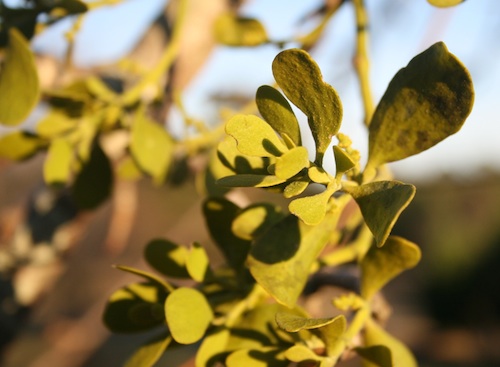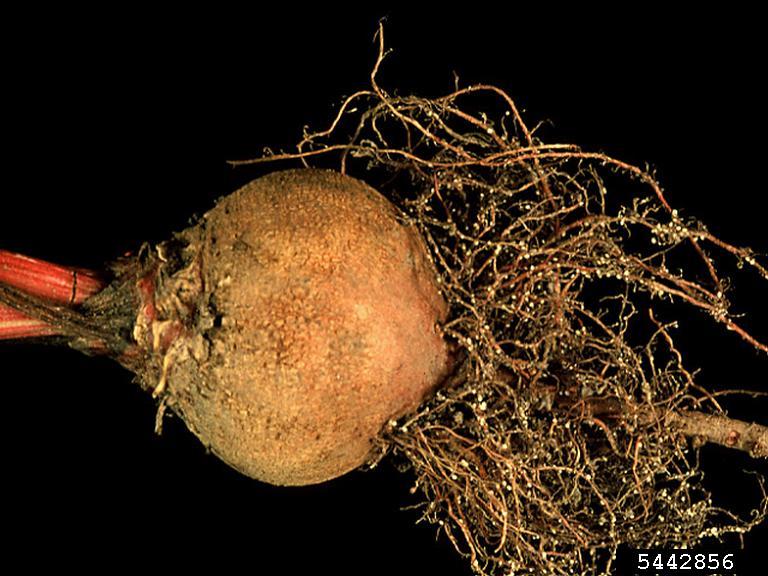Mistletoe is often used postmortem to lure unsuspecting sweethearts to a Christmastime kiss. For the other 364 days of the year, it is actually considered an infectious parasite that kills trees.
If you see green leaves in the top of deciduous trees, it might be mistletoe.
Mistletoe is an evergreen, parasitic plant found on a wide host of trees, including alder, birch, cottonwood, maple, oak, hickory and elm. Mistletoe gets water and nutrients from the host tree, but it is not totally dependent.
Leaves of mistletoe contain chlorophyll and are capable of making their own food from carbon dioxide and water. Birds feed on mistletoe berries and deposit them on new trees in their droppings. This is how mistletoe spreads from tree to tree. When the seeds germinate, they grow through the bark and into the vascular system of the host where it obtains water and minerals.
Mistletoe can be particularly stressful to trees during drought conditions. Trees that are heavily infested by mistletoe for several years may lose vigor, become stunted or even killed. This is especially true if the tree is already subjected to drought stress, harsh winter conditions, construction injury, diseases, insects or other conditions that further weaken the tree.
Mistletoe grows slowly at first and may take years to produce seeds. Healthy trees can tolerate small mistletoe infestations, but individual branches might be compromised and susceptible to wind or snow breakage.
Simply removing mistletoe will provide some protection from spreading. However, if you remove only the mistletoe, it will probably regrow.
To effectively control mistletoe, prune the tree one to two feet beyond the point of attachment. If the mistletoe is located on a main limb or trunk, remove the top of the mistletoe and wrap the cut with an opaque plastic to prevent sunlight. Since mistletoe requires light, it will die within a couple of years. It might be necessary to repeat this treatment, especially if the wrapping becomes detached or the mistletoe is not completely killed.








